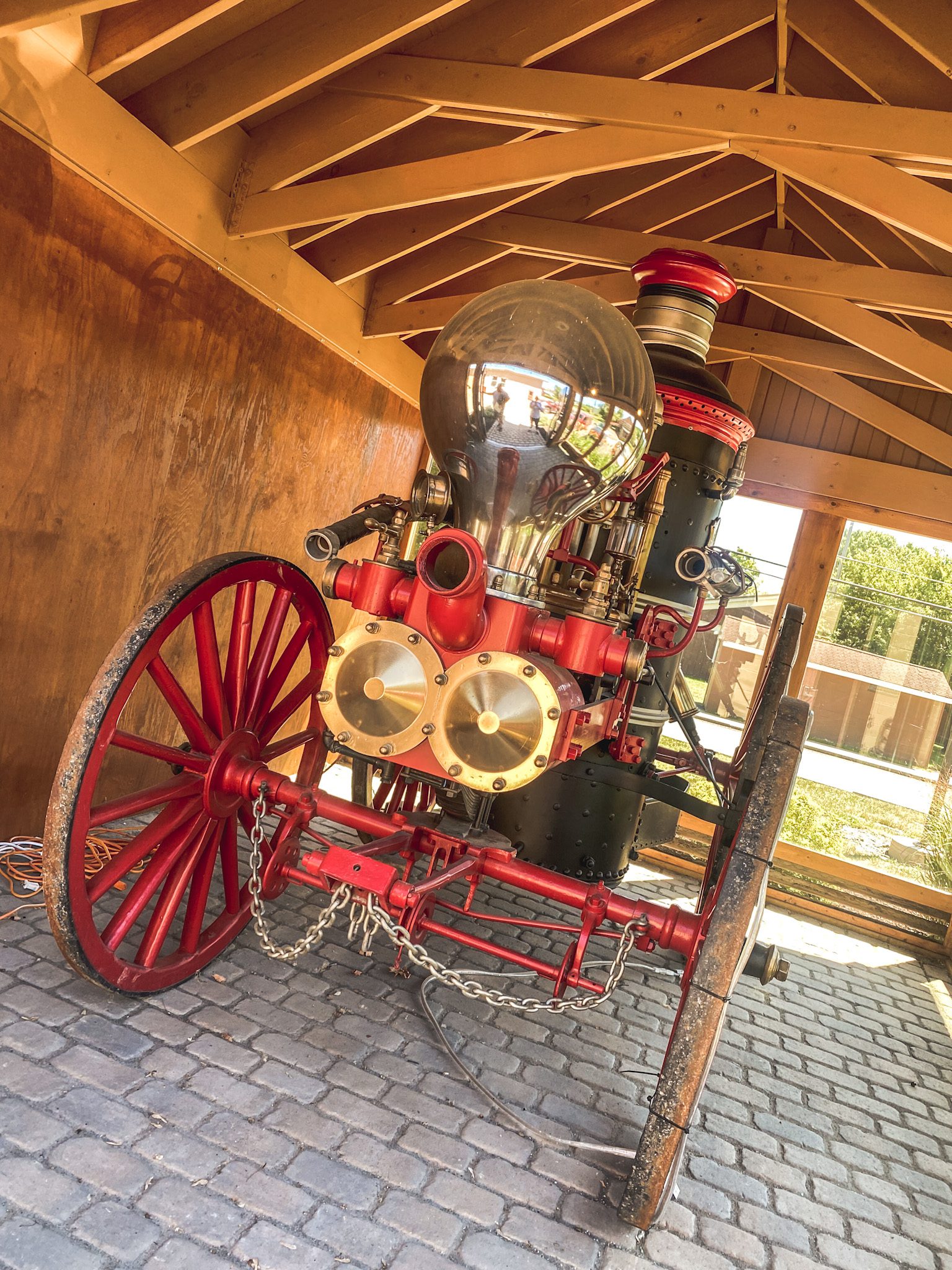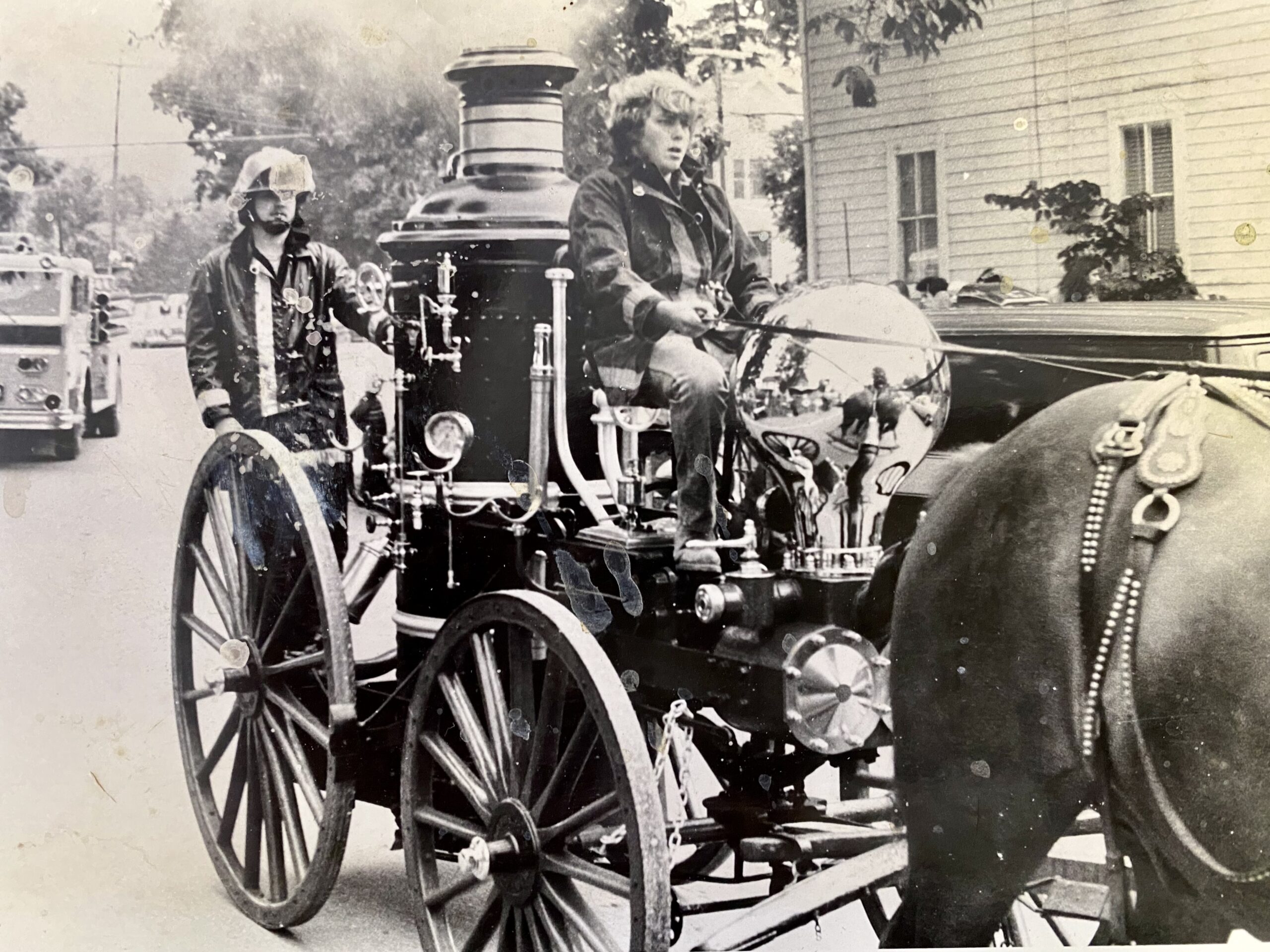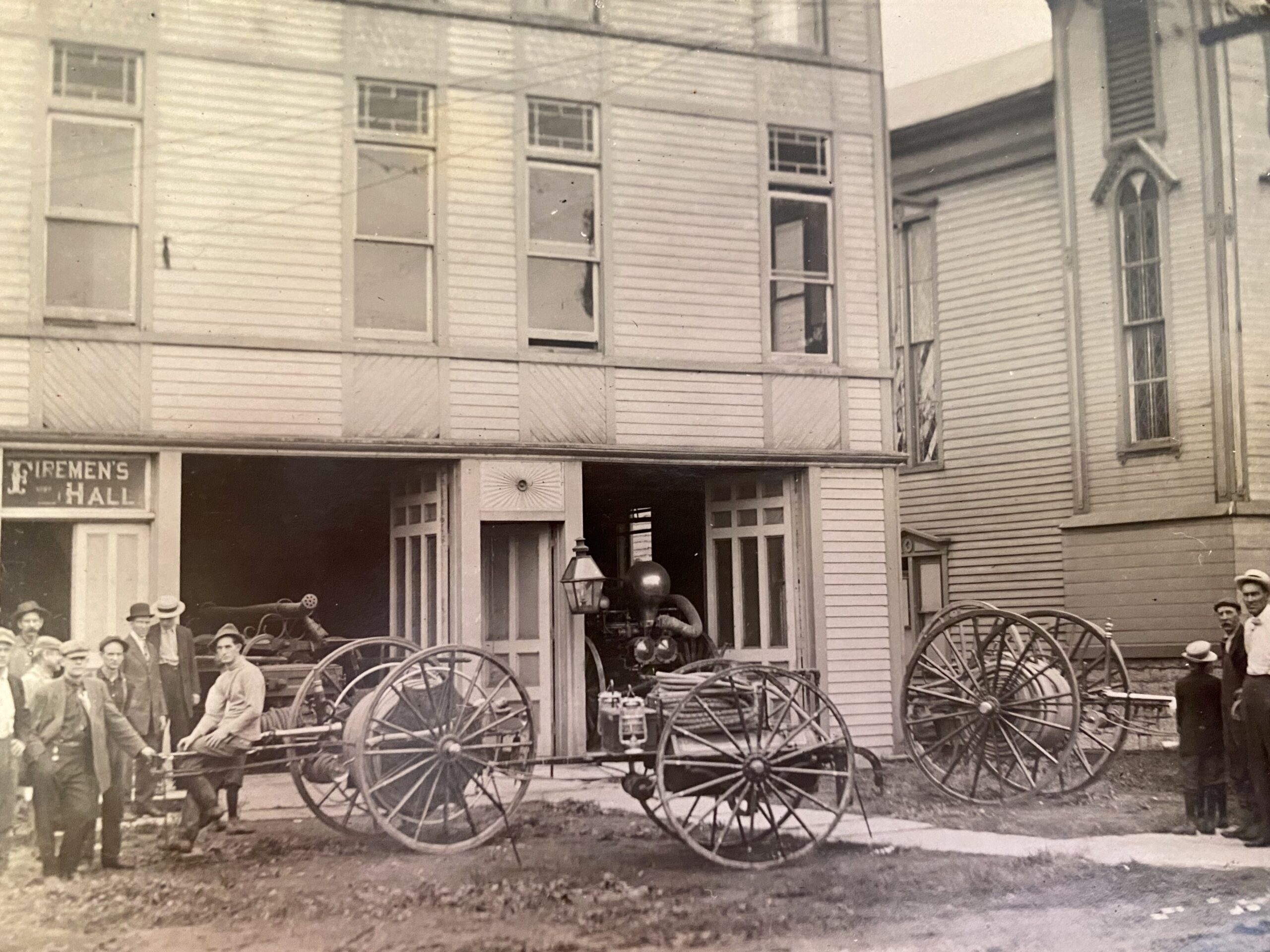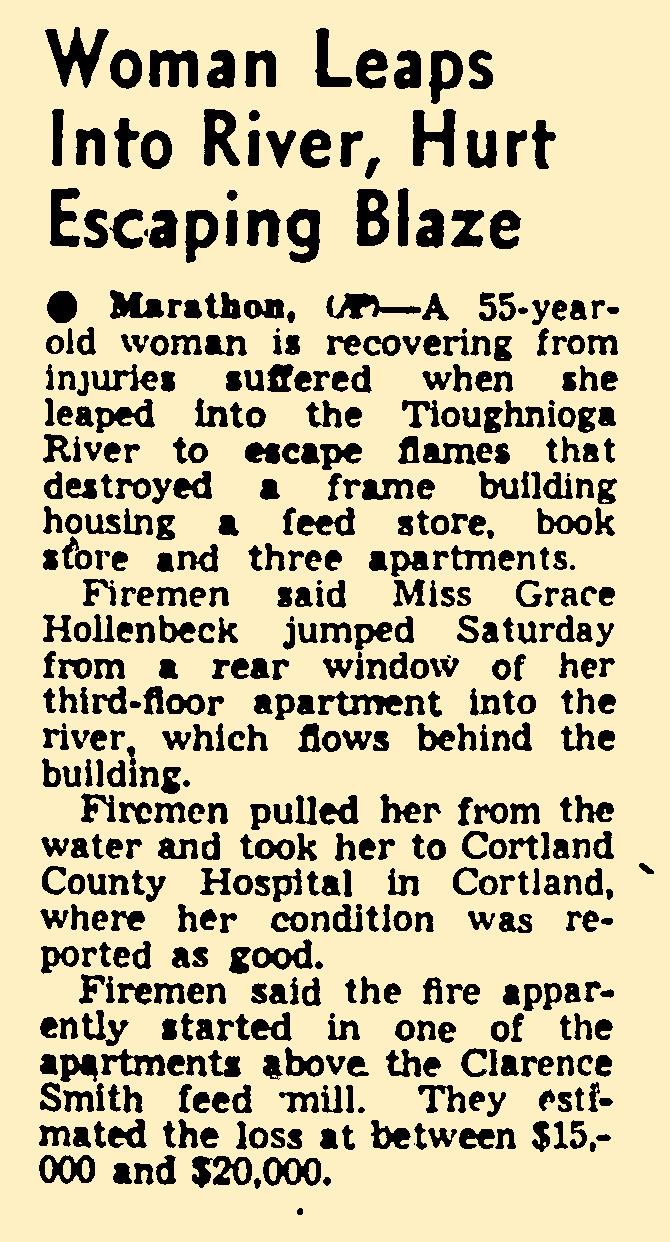Location #1: 2 Peck Street, Marathon NY
(42.440123, -76.034425)
The new-fangled steam pump fire engines were heralded to tame the rowdy firemen! Marathon’s competing fire companies at the time were certainly in need of some taming.


In May of 1889, the Marathon Fire Department raised the funds to buy their very own Clap & Jones Steam Fire Engine. At one o’clock on a Friday afternoon, the fire crew rolled out the new-fangled steamer, with great pride, onto the bridge over the creek. There, after just 12 minutes of work and little comparable effort, the test fire was successfully extinguished. Galvanized, the crew moved the steamer to the Hulbert Block.
”Various tests were made, one of which was throwing three streams at once, one going over the tower of the Hubert Block, another over the flagstaff on the Marathon House, and the third at a height estimated at ten feet over the gilded ball on the ball on the flagstaff on the Tarbell Building,” wrote the Marathon Independent.
It was then chaos ensued.
“Inside the dome, over the pumps, is a vacuum chamber made of sheet brass, outside of which the water in the dome lies. The cylinder should have had placed in it, rings to withstand outside water pressure, but the in putting it together for shipment, the rings had been left out,” the Marathon Independent wrote.
The building 240 pounds of water pressure (per square inch) caused a monumental collapse in the cylinder. Befuddled, the firemen stood staring at the now flaccid hose. In a cloud of steam and disappointment, the crew packed up the new-fangled fire pumper and shipped it back to Syracuse.


The following morning, the steam pumper was returned to the Marathon Fire Department in good repair. It went on to pass all its tests with flying colors. Despite its initial lackluster performance and a little hurt pride, the Clapp & Jones Steam Fire Engine would faithfully serve the Marathon and surrounding community for many years to come.
Standing here, at the old steam pumper, if you peer due west, across the Tioughnioga River, through the thick of trees, you can just make out the sight of one of Marathon’s most notorious fires, the burning of Mansard Block.
Location #2: Mansard Block Historical Marker in Marathon, NY
(42.440133, -76.035877)
The burning of Mansard Block is a harrowing tale of terror, devastation, and one woman’s incredible bravery.
Built in 1869 by D. Hunt & A. Garley, the massive four-story timber-built structure was home to many of Marathon’s prominent businesses and families. Throughout its history, it served as a school, apartments, an attorney’s office, a lodge, a custom furniture shop, and a feed store. For 84 years, it proudly stood, towering over the Tioughnioga river, until that fateful Saturday afternoon on November 5, 1953.
The fire broke out at 3 p.m. and quickly engulfed the building. The flames drew a crowd of spectators to the old bridge. They watched in horror as Phalen & Smith’s feed store and Ausman’s Book Shop were consumed by the blaze. The Munson Block housed three apartments; Mrs. Elsie Kittle and her six children, Mrs. William Ingram and her three children, and socialite, Grace Hollenbeck, each occupied one of the upper-level homes. Mrs. Clermont Thorton, a neighbor who was first on the scene, alerted the Kittle family, who, along with the Ingram brood, all escaped to safety, much to the on-lookers’ relief.
“At the height of the fire, the firemen feared the explosion of a gasoline storage tank,” reported the Binghamton Press. At this time, police chief Paul Youngs swiftly began organizing the spectators, moving them a safe distance away from the nearly out-of-control inferno. Fortune favored the firemen that day, and the southern winds prevented the 200-gallon fuel tank from combusting. It was then witnesses first spotted Grace Hollenbeck, hovering at the precipice of her third-story window.



“Mrs. Hollenbeck apparently was unable to get through the flames and make her escape,” reported the Cortland Standard the following day. “She ignored the shouts of the fireman and jumped an estimated 50 feet into the river.” Alas, though the flames were no longer a threat, the year-long drought was. The Tioughnioga River only held a mere foot of icy water, not nearly enough to break her fall.
Without hesitation, Fire Chief Carlton Bowerman and Earl Kurtz dash down the steep banks of the river and into the frigid flow to rescue the immobile Grace Hollenbeck. There she lay, her spine fractured from the three-story fall. Immediately, she was rushed to Cortland Hospital, where she was reported in fair condition, despite presumed internal injuries and was expected to make a full recovery. Grace had no other major injuries, much to the doctors’ amazement.
The cause of the blaze was officially recorded as unknown. The Rochester Chronicle reported, “the fire apparently started in one of the apartments above the Clarence Smith feed mill.” However, the Cortland Standard wrote, “The fire broke out about 3 p.m. in the feed mill.” It took 3 hours and four fire departments to contain the blaze, though it continued to smolder for hours afterward. The Marathon Fire Department tended the embers all Saturday night into the wee hours of Sunday morning when the flames started anew. By Monday morning, all that was left of the Mansard building, one of Marathon’s oldest structures, was a shell of the front and smoldering debris. The timber was so old and dry that the 84-year-old historical behemoth simply disintegrated.
Later, a car wash was constructed on the former Mansard Block site. Shortly after its completion, as if the land refused to hold any more history, it fell, like Grace Hollenbeck, dramatically to the river below. Unlike Grace, the building was not spared, and it was washed away. Large slabs of broken cement are the only traces of its existence. The town then surrendered, declaring the site a historical space, never to be built upon again.



Source:
1. Livingston, J. W. “Fire Department.” “Grip’s” Historical Souvenir of Marathon, 1901.